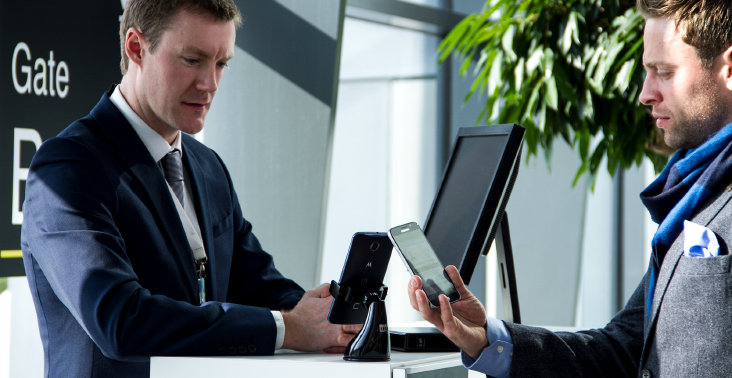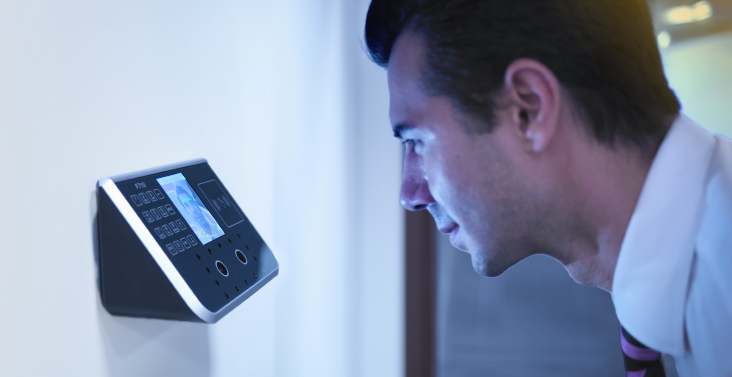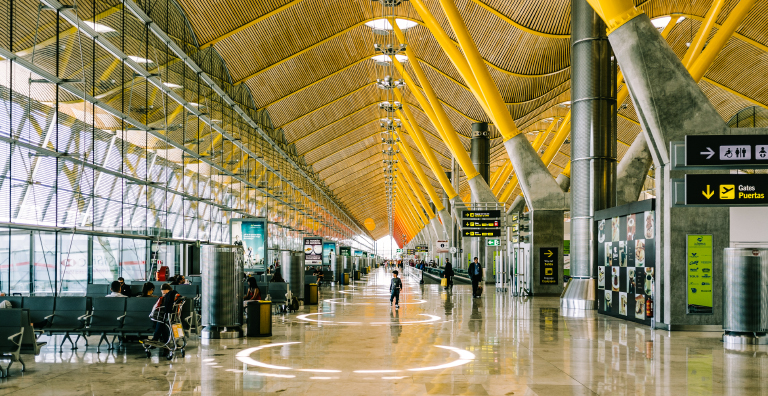How Contactless Tech Is Transforming Passenger Experience
How many of you traveled this year for the first time in a long time? Did you find that your passenger experience was more seamless? You’re not alone. For many reasons, the travel industry has been hard at work making the passenger experience better by meeting rising consumer demand for digital, contactless experiences. And the technology is proving transformational.
The Passenger Experience Before Contactless Technology
I’d be remiss if I didn’t talk about the smart phone revolution in the context of travel and the passenger experience. Consumer adoption of smartphones and devices has changed a lot about the way we interact, and travel is no exception. Although airlines began installing Common Use Self-Service (CUSS) kiosks in the late 1990s, printed boarding passes were still the norm. When did it change?
American Airlines rolled out barcodes for mobile and smartphones in 2008 and expanded the mobile boarding pass service to 42 airports in 2010. A few fun pieces of reporting nostalgia show how far we’ve come. The first was published by Fast Company in 2009, discussing whether or not mobile boarding passes were truly needed. And in 2014, Juniper Research projected that one in three boarding passes would be mobile by 2019.
Software and technology advancements such as Near Field Communication (NFC) have taken us much farther in our digital travel journey and today our passenger experience is vastly different with contactless options from the time we check in to our flight, clear security, shop the airport and board a plane. Bleeding-edge developments in tech such as artificial intelligence and biometrics are poised to make the travel of tomorrow even better.
What’s Driving the Change to Contactless Passenger Experience?
The travel industry in general — and airports in particular — have used emerging opportunities over the last two years to reconsider business as usual. While initially deploying contactless technologies and changes in space and infrastructure supported the goals of overcoming COVID-19, some of these solutions enabled efficiencies for airport and airline staff and increased safety and security for travelers.
The Pandemic Had a Lasting Effect, Especially on User Expectations
Like many industries, digital transformation was well underway prior to the pandemic. Consumers already reliant on technology leaned into digital solutions to work and play during lockdowns, and doubled down on demand for personalization, self-serve options, on-demand access, seamless and contactless mobile encounters.
While health and safety were the focus of implementing contactless technologies, the Airport Council International reported airports are now re-examining how technology, automation and digital transformation also played a role in the customer experience. The same article discusses the continued investments in cybersecurity, cloud services, digital customer care channels, mobile services and biometric ID management, meaning contactless interactions are here to stay.
New Standards Underpinned Advancements
The International Civil Aviation Organization (ICAO), an agency of the United Nations, has been offering guidelines for machine-readable travel documentation since 2013. Most recently, in 2021 the body met to discuss “solutions enabling stronger synergies between national identity management, travel documents, border control, the clearance of aircraft, and all aspects of baggage and cargo screening.” A digitally signed barcode carried on a smartphone, called Visible Digital Seal was proposed for broader implementation. The ICAO cited the potential of facial recognition and other biometric initiatives to enhance travel security.
The Canadian government launched ArriveCAN, a free digital platform that allows travelers entering Canada to securely provide mandatory travel information, including proof of COVID-19 vaccination and quarantine details before and after entering Canada. Officials simply scan a QR code and confirm information that the traveler has provided through the ArriveCAN app.
The U.S. Customs and Border Patrol has leaned toward lower-contact solutions as well, for example with a Mobile Passport Control app that allows eligible travelers to submit their passport and customs declaration information through a free, secure app.

Contactless Technology Revived the Travel Sector
Contactless technology solutions have revived the travel sector by supporting a touchless or near-touchless passenger experience that is faster and more effective. Use of mobile boarding passes has seen a massive upswing in recent years. For example, the number of British Airways passengers using mobile boarding passes has grown from 25 a day in 2010 to more than 28,000 today. It’s a contactless solution utilizing a scannable code on a smartphone and RFID barcode readers.
The rise of the mobile boarding pass is part of a larger trend toward “smart ticketing.” The market for such technology is expected to top $21 billion by 2028, with growth driven in part by the COVID-inspired need to support contactless encounters and minimize physical interactions between operators and passengers.
Biometrics, too, are changing the travel landscape. Forbes reported on the emergence of frictionless air travel noting facial recognition not only for TSA checkpoint clearance, but also for boarding. In fact, United Airlines is testing an end-to-end biometric experience. Identity is verified at a kiosk and a photo is taken. The traveler’s face is then scanned by a biometrically enabled camera as the traveler passes through bag drop, security and boarding. The European Union is also rolling out biometric national ID cards for travel, leveraging both fingerprints and facial recognition. It’s part of a broader trend toward incorporating biometrics into travel and identity documents.
The Future of Travel and the Passenger Experience
Technology is making it easier and more convenient for travelers to reach their destination. Today, leisure travel is on the upswing. TripAdvisor found that 71 percent of Americans had leisure travel planned in 2022, and a September 2022 poll found nearly two-thirds (64.7 percent) of U.S. travelers still expected to take at least one overnight leisure trip in the next three months.
Digital Authentication and Payment
What does this mean for future investments and innovations? It means an increase of exploration and investment into capabilities to support emerging technologies. Biometrics such as facial recognition are reshaping the travel authentication process as we speak, along with digital documents such as ePassports. Infrastructure automation that includes tokenization for the check-in process, payment for value-added services and facial recognition at all points of the experience elevate the overall travel experience by adding speed and convenience.

Standards and Guidelines to Watch
Emerging guidelines from the NIST and ICAO support the development of travel-related technologies, potentially improving adoption of modernized tools in support of better passenger experiences. NIST, for example, recently evaluated the accuracy of facial recognition software for flight boarding. It found that current algorithms could scan a passenger’s face with 99.5 percent accuracy. The rise of the “digital travel credential” could speed travelers’ border experiences and make it easier to do things like replace a lost credential or authenticate oneself for a visa application.
The Continued Adoption of Contactless Tech
The travel industry accelerated its embracement of contactless technologies in response to the pandemic. At the height, it was important to reduce the opportunities for close contact, in order to check the spread of the disease.
Low-touch and contactless solutions will be leveraged not just for their public-health benefits, but also as the means to improve the travel experience. From biometric authentication to digital credentials, contactless solutions add efficiency and help move people through airports and travel hubs faster. Such solutions respond to consumers’ rising expectations that mobile experiences will simplify their lives.
For travel hubs and service providers, digital strategies and automation can help lower costs and reduce manual processing times within terminal operations. Contactless solutions could also open new non-aeronautical revenue streams by creating opportunities for biometric payment, virtual shopping and ordering services. Data from updated and upgraded airport ecosystems can assist in breaking down silos, increasing collaboration and delivering a comprehensive view of airport operations.
Visit the Security & Identity Trends blog for more insights on industry developments. To keep your finger on the pulse of new biometric, physical and logical RFID solutions for secure access and industry-specific security news, subscribe today.
